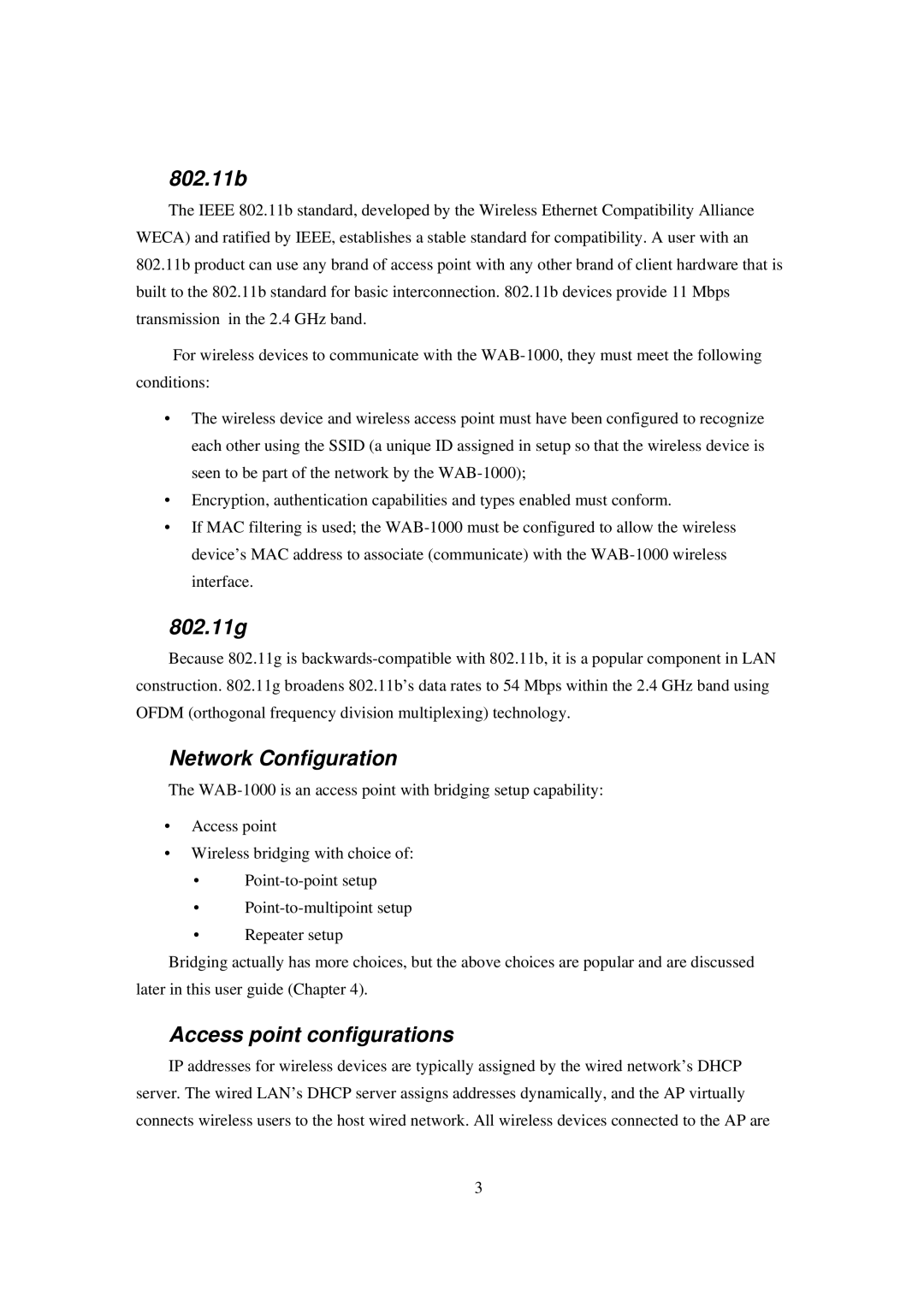802.11b
The IEEE 802.11b standard, developed by the Wireless Ethernet Compatibility Alliance WECA) and ratified by IEEE, establishes a stable standard for compatibility. A user with an 802.11b product can use any brand of access point with any other brand of client hardware that is built to the 802.11b standard for basic interconnection. 802.11b devices provide 11 Mbps transmission in the 2.4 GHz band.
For wireless devices to communicate with the
•The wireless device and wireless access point must have been configured to recognize each other using the SSID (a unique ID assigned in setup so that the wireless device is seen to be part of the network by the
•Encryption, authentication capabilities and types enabled must conform.
•If MAC filtering is used; the
802.11g
Because 802.11g is
Network Configuration
The
•Access point
•Wireless bridging with choice of:
•
•
•Repeater setup
Bridging actually has more choices, but the above choices are popular and are discussed later in this user guide (Chapter 4).
Access point configurations
IP addresses for wireless devices are typically assigned by the wired network’s DHCP server. The wired LAN’s DHCP server assigns addresses dynamically, and the AP virtually connects wireless users to the host wired network. All wireless devices connected to the AP are
3
